Business
The TikTok Ban: What It Could Mean for Marketers
Published
2 years agoon
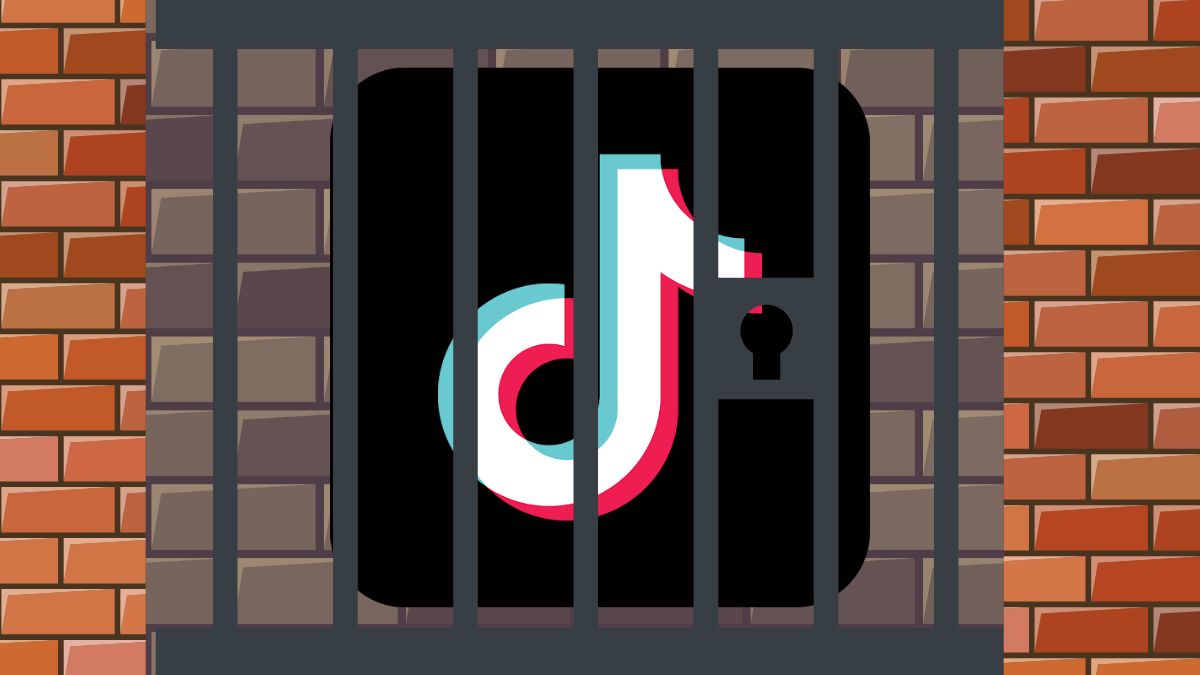
Since its founding in 2016, TikTok has had a massive impact on culture—and business. Now, it’s leaving an impression on politics as well… but not necessarily a good one.
Amidst increasing tensions between the US and China, lawmakers across the board have been flirting with the idea of banning TikTok. But what would a TikTok ban actually look like? And what would it mean for the many businesses that make the social network part of their marketing strategy?
Is TikTok getting banned?
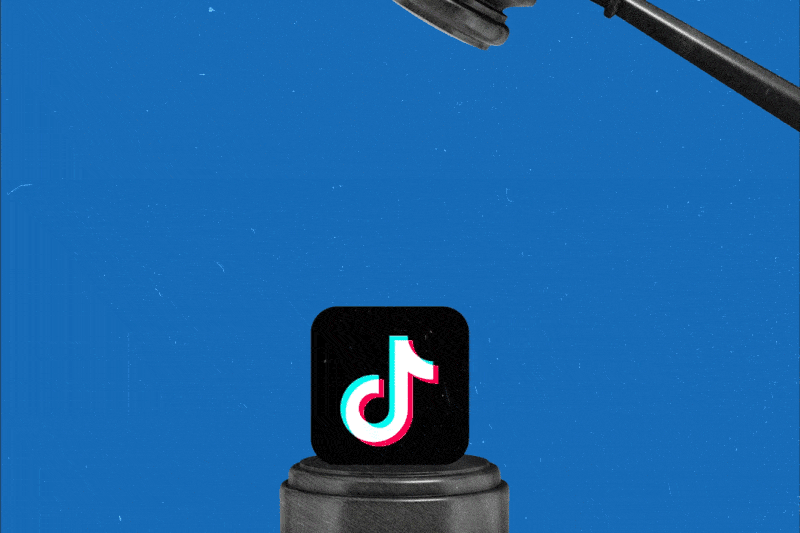
TikTok has reportedly already been banned in a handful of Asian countries. Many countries, including the EU, UK, Australia, France, and the US have banned TikTok for use by government officials, citing privacy concerns.
The question on everyone’s mind, however, is whether TikTok is going to get banned nationwide in the US. Many government officials want to ban TikTok out of fear that the Chinese government has access to users’ data and might use it for spying, targeting dissidents, or election interference.
Timeline of attempts to ban TikTok in the US
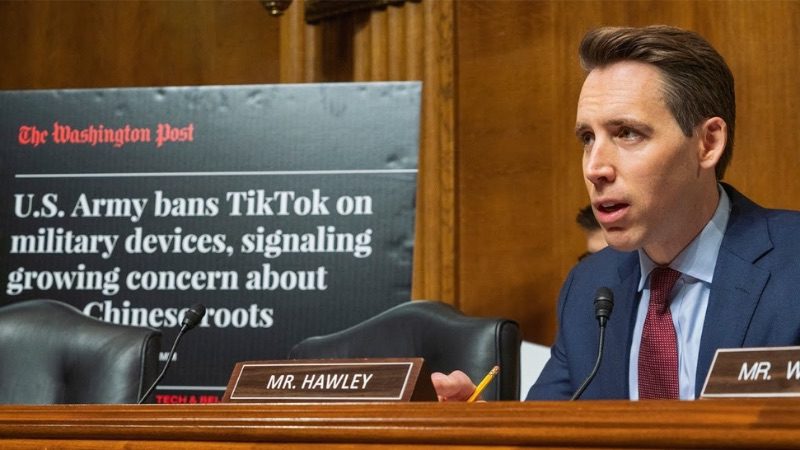
- December 2019: The US Army bans TikTok on government-issued phones.
- August 2020: Trump signs an executive order requiring TikTok to be taken off the market in 90 days unless its parent company (ByteDance) sells it.
- August 2020: Florida and Nebraska ban TikTok on government devices. As of May 2023, at least 34 states have enacted similar bans.
- September 2020: Trump’s TikTok ban is halted by a federal judge.
- June 2021: Biden revokes Trump’s executive order, but asks the Secretary of Commerce to investigate the app’s national security risk.
- June 2022: FCC Commissioner Brendan Carr asks Apple and Google to take TikTok off the app store.
- December 2022: Numerous bills are introduced targeting TikTok.
- December 30, 2022: Biden signs the No TikTok on Government Devices Act into law.
- January 2023: Sen. Josh Hawley introduces a bill to ban TikTok nationwide, which does not pass.
- March 2023: Sen. Mark Warner introduces the RESTRICT Act, a bill which would allow the Secretary of Commerce to ban TikTok. It has not yet passed.
- May 2023: Montana Gov. Greg Gianforte signs a law banning any business with TikTok. The bill is being challenged in court.
Could a TikTok ban ACTUALLY happen?
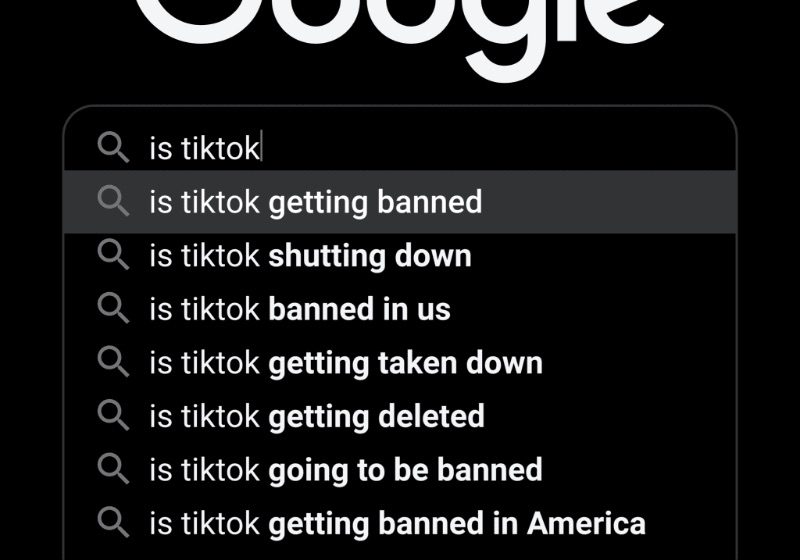
Nobody really knows. The US government could certainly try to ban TikTok—and it increasingly seems like they will—but there’s no precedent for the government banning an app entirely.
The FCC has asked Apple and Google to consider taking TikTok off their app stores. That might be the closest thing to a full ban we’ll see, but it won’t do anything to stop the 150m+ Americans who already have TikTok. Plus, there are other ways to download an app.
Trump’s executive order would’ve banned any transactions between US citizens and ByteDance. This would have removed TikTok from the app store while also preventing US companies from advertising or doing business with TikTok. Still, it wouldn’t keep people from using it.
The government could ask Apple and Google to change their systems to make TikTok unusable on their phones. At this point, the ban could be considered a violation of the First Amendment and would likely result in a lengthy legal battle.
What they can’t do, experts say, is make it illegal for a private citizen to log into TikTok. As long as TikTok exists, you will technically be able to access it. And of course, no ban would fix the mountains of user data that ByteDance already has.
How do marketers use TikTok?
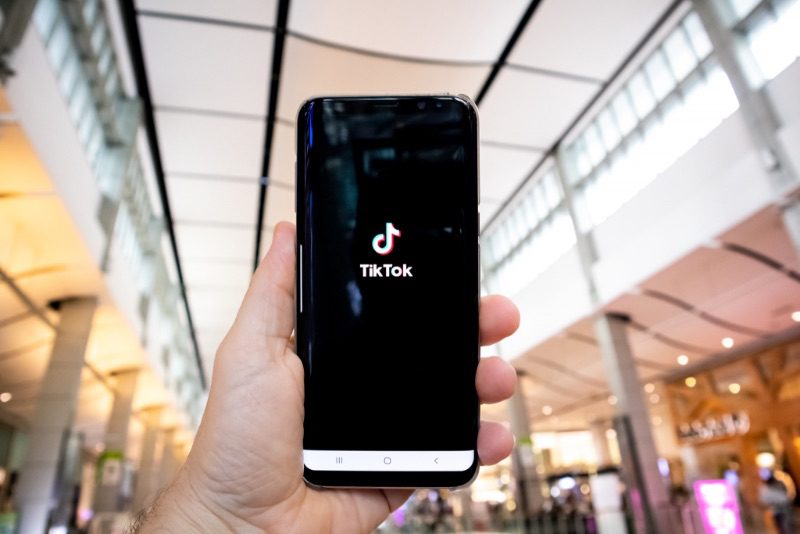
As TikTok has blown up pop culture, it’s become a crucial part of many companies’ social media strategies. Some of the ways companies use TikTok include:
- Ads
- Branded content
- Collaborating with influencers
- Participating in viral trends and memes
Many corporate TikTok accounts will post multiple times a day in an effort to reach a Gen Z audience. Some videos will sell the company’s products or services, but most are made with the goal of raising brand awareness.
What does a TikTok ban mean for marketers?
If TikTok gets taken off the app store, marketers will have to work fast to keep their audience’s attention.
In the short term, TikTok’s massive audience could quickly flock to other short form video platforms, such as YouTube Shorts and Instagram Reels. They may also seek out brand new social media sites.
Brands who fail to keep up with this audience could stand to lose millions. TikTok is also a reliable source of new viral trends. It could suddenly become a lot harder to identify the latest rising stars, music, fashions, and memes among Gen Z.
3 ways marketers can prepare for a TikTok ban
1) Invest in high quality visuals
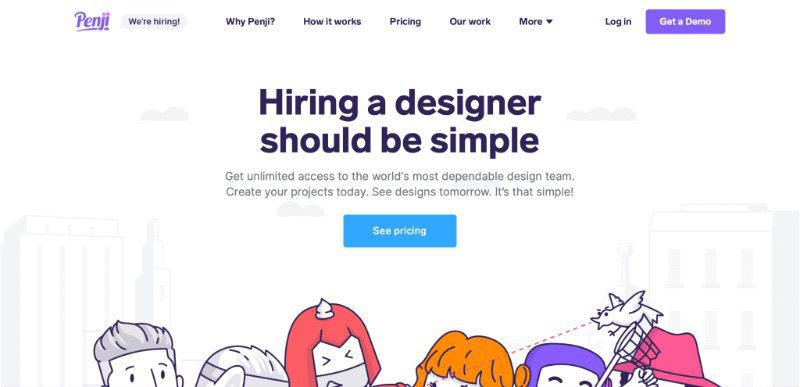
TikTok makes it easy to go viral, even with a small production budget. But if the social network goes away, you’ll have to work harder to stand out.
If your marketing demand outweighs what your current team can produce, try working with a service. Consider things like…
- Video marketing services (e.g. Digital Brew)
- Graphic design services (e.g. Penji)
- Influencer marketing services (e.g. Audiencly)
In our own review, we found Penji to be a quick, easy, and high-quality option for extending your design team. If you lose TikTok, you’ll have to make up for the loss with high-quality branding.
We also have a special promo code you can use for 35% off your first month with Penji — TTBAN35.
2) Stick with video, but use other platforms
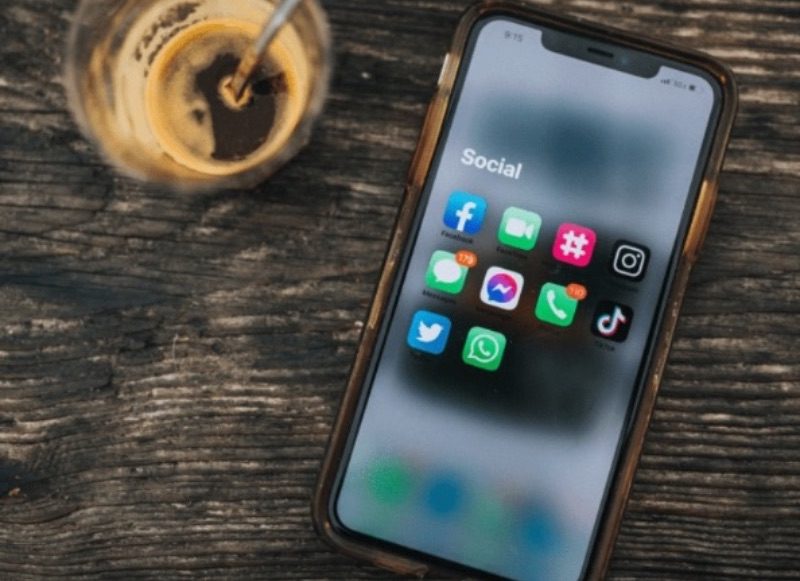
Short form video is addictive, and the American public isn’t likely to quit cold turkey. Don’t let debates over TikTok dissuade you from making short videos. Keep making them, but don’t make them just for TikTok.
Nowadays, practically every social site is investing in short-form video, and many are actively promoting those videos to as many people as possible. Post your clips on YouTube, Facebook, Instagram, LinkedIn, anywhere you have a brand account. You might be surprised by where you find your audience.
3) Take another look at your strategy
At its cultural peak, brands started to see TikTok as an absolute must for staying relevant. You may see your brand awareness suffer when it goes away, but step back and think. What does TikTok do for you?
For some brands, it might not be much. Have your TikToks brought sales? Do they improve brand awareness? Do they reach an audience you really want to target?
Developing a brand strategy can be difficult, but it’s important to go back to the drawing board when you’re losing a whole social network. First figure out what you want to retain from TikTok, then worry about how to retain it.
Conclusion
Is TikTok getting banned? Maybe, kinda, maybe not. If tensions between the US and China escalate, the platform may get taken down, but efforts to fully ban it are legally dubious and none have gained much traction so far.
Still, it’s best to stay prepared by diversifying your video content, staying on top of new trends, and investing in great visuals.
Business
Top 10 Best Places to Buy a Mid Century Modern Office Chair
Published
2 weeks agoon
July 4, 2025
What was once old is new again: mid century modern is back in style. From architecture to furniture, the postwar look is in, and the hype extends all the way to office chairs.
Do you need a mid century modern office chair in your life? If so, there’s plenty to choose from. Your office chair should be tailored to your style, whether you like luxury, utility, or something in between.
That’s why we’ve put together our 10 favorite places to find your ideal mid century modern office chair.
What is mid century modern design?
After World War II, spirits were high in the US, and new technology was taking the country by storm. Mid century modern refers to the design concepts that came about during this time.
As opposed to the frilly, ornate designs of classical furnishings, mid century modern designs are angular, material, and functional. Wood is a common design element, especially teak. Mid century modern furniture may also have materials like glass, vinyl, and metal. Designs are simple and geometric, with bold accent colors to make them pop.
The mid century modern aesthetic never really went away, but it’s made a noted comeback in recent years. Some have chalked it up to Boomer and Gen X nostalgia, others point to mid-century-set shows like Mad Men and The Marvelous Mrs. Maisel.
Why should I buy a mid century modern office chair?
Mid century modern is the perfect fusion of style and utility. If you want to cultivate an office space that commands respect without being ostentatious, mid century modern is the style for you.
When it comes to office chairs, an MCM one is often made with sturdy wood and vinyl. They combine the ergonomics of a modern office chair with old-fashioned grace.
If you’re concerned with utility and utility only, a more bog-standard office chair may suit you. But a mid century modern office chair is great for someone who wants to wow colleagues with a mature, thoughtful business space.
Where can I get a mid century modern office chair?
1) Wayfair
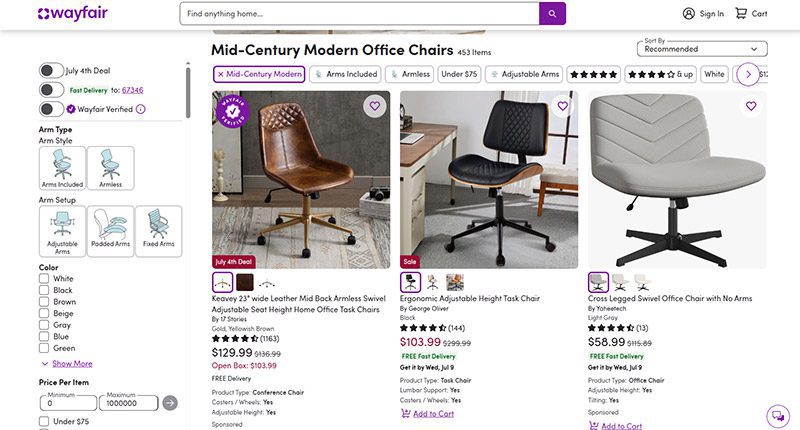
When it comes to furniture, Wayfair offers the best of both worlds. Their goods, including their mid century modern office chairs, are stylish and affordable. You can get a sturdy task chair for less than $100 or a more distinguished seat for less than $350.
MCM office chair examples: Dovray ($126), Bradford ($139), Lithonia ($133)
2) France & Son
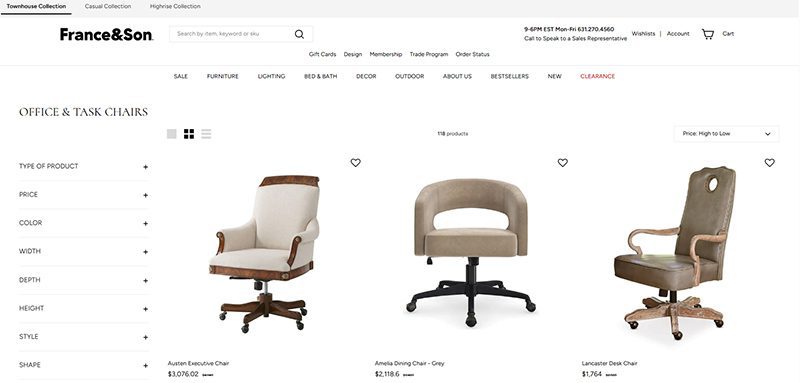
Wayfair’s chairs are affordable, but France & Son is the perfect option for luxury shoppers. Their mid century modern office chairs are robust and sleekly designed. If you dress to impress and enjoy the finer things in life, these are the chairs for you.
MCM office chair example: Brooks ($695)
3) Houzz
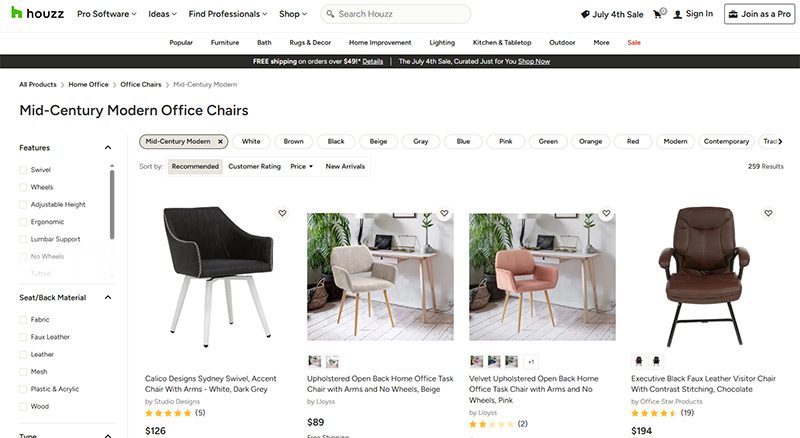
Started as a community for people to share home decor tips, Houzz has become a great ecommerce platform for finding stylish furniture. They’re more known for home decor than desk chairs, but they have plenty of great, affordable finds if you know where to look.
MCM office chair examples: Arvilla ($173), Rathburn ($259)
4) Laura Davidson
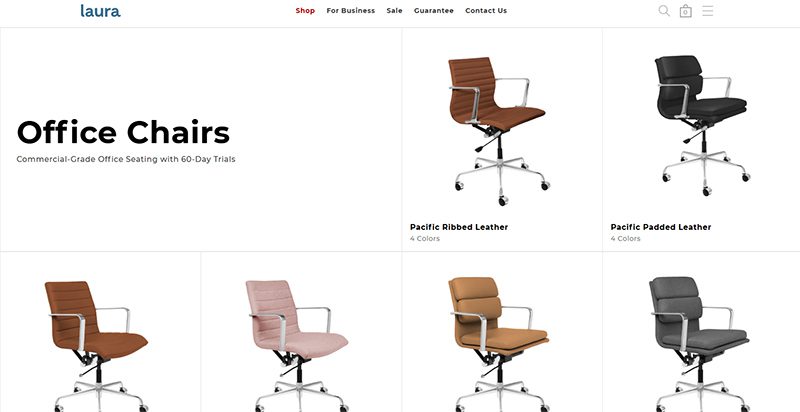
The Laura Davidson collection offers a fairly limited selection of classic office furniture. Still, there’s a reason they’re trusted by big-wigs like Apple, Disney, and Salesforce. Their chairs are sturdy and beautifully designed, reimagining classic Eames and Knoll designs.
MCM office chair examples: Rockefeller ($275), SOHO II Soft Pad ($450)
5) Icons of Manhattan
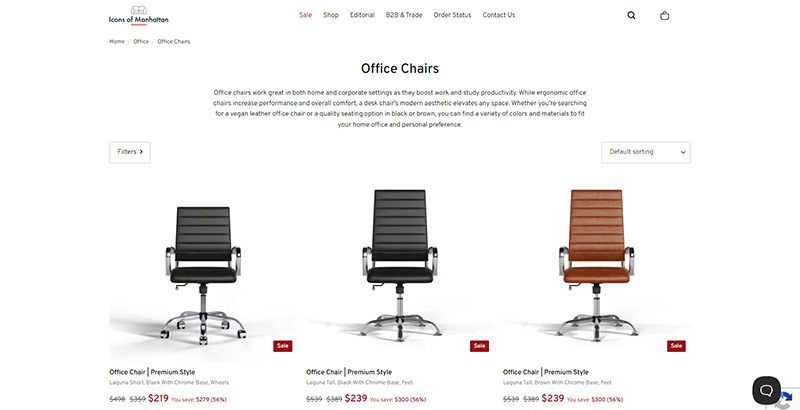
Icons of Manhattan has a simple philosophy: do one thing, and do it right. Their office chairs are handcrafted from premium materials and tailored to a mid-century modern style. If you want that Mad Men energy in your office (hopefully with a lot less angst), these are the chairs for you.
MCM office chair example: Ribbed Medium ($219)
6) Amazon
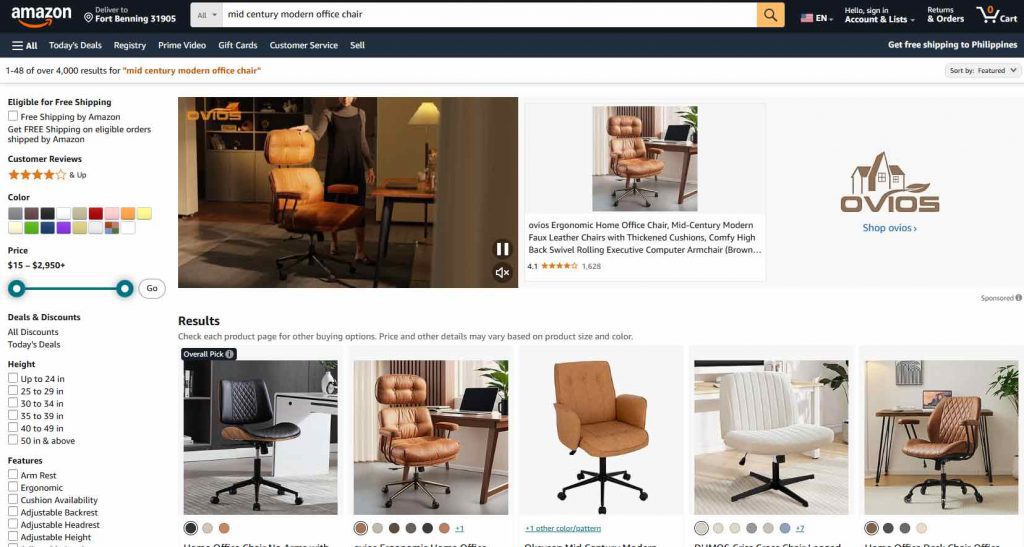
Yes, the internet’s premier shopping destination has a robust collection of mid century modern office chairs. Like with most products, their selection of seats is vast and can be hit or miss. Still, they’ve got stunning chairs available for any style, whether you care about comfort, class, or ergonomics.
MCM office chair examples: IDS Home Modern ($219), Art Leon MCM Swivel ($139)
7) AllModern
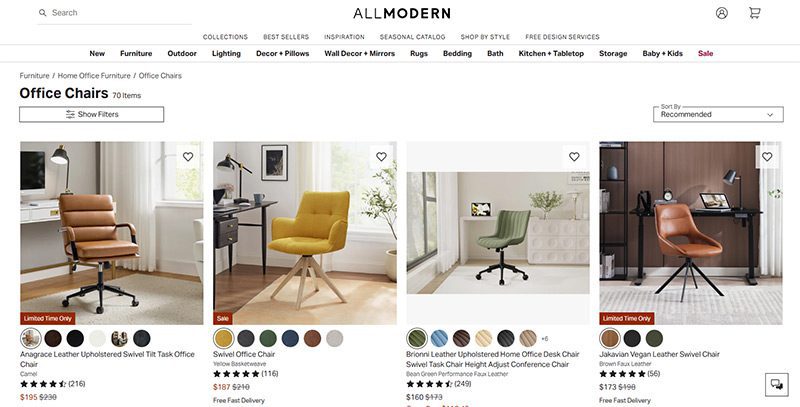
AllModern’s collection of desk chairs and other furniture truly embodies the mid century modern spirit. Their work is tight, angular, and functional above all. They’re part of the Wayfair family and they traffic in a number of modern styles, but their sleek chairs are perfect for any mid century modern space.
MCM office chair examples: Frederick ($229), Kealey ($349)
8) Overstock
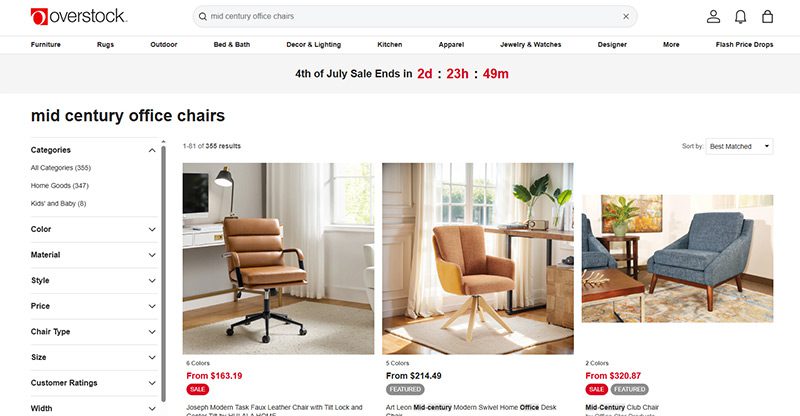
Overstock is known as a one-stop shop for quality home goods at sub-wholesale prices. If you want a spiffy mid century modern office chair that won’t break the bank, they’re the first place to look. While they’re somewhat less reliable than the more upscale platforms on this list, their selection is massive.
MCM office chair example: Joseph Modern ($163)
9) Walmart
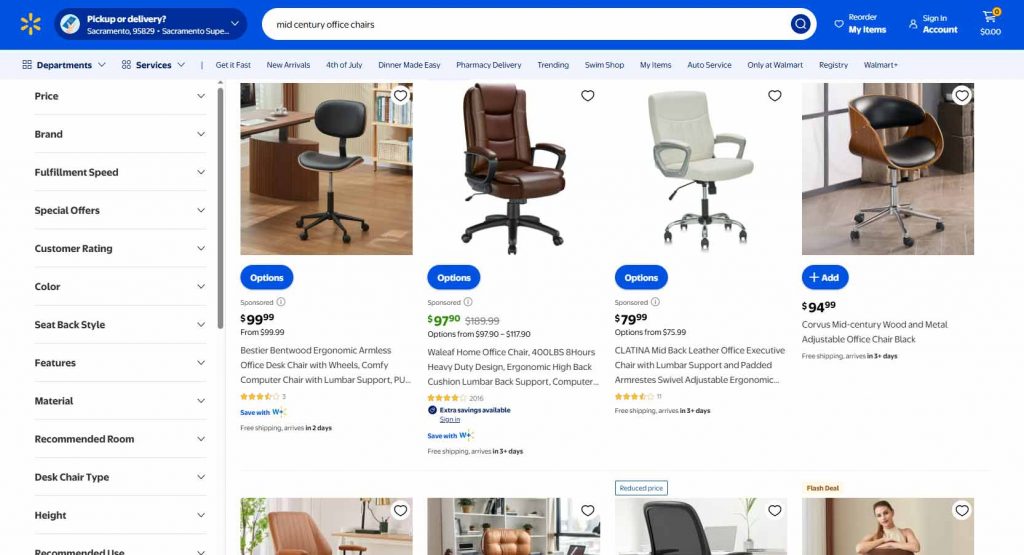
Hayneedle’s selection of mid-century modern office chairs falls somewhere between the minimal Laura Davidson and the endless Amazon catalog. Their array of mid-century designs is affordable and versatile, with chairs that match almost any style. While they may be part of the Walmart family, these chairs are anything but second-rate.
MCM office chair example: Waleaf ($97)
10) Target

Why splurge when you can save? As usual, Target is a hidden gem, offering a sturdy selection of mid century modern office chairs for some of the cheapest prices out there. Many of the chairs they offer are from the same designers as these other stores—Christopher Knight, LumiSource, Armen Living, etc.—at reduced prices.
MCM office chair example: Lombardi ($136)

A quality payroll service is one of the most invaluable tools any entrepreneur can have. Whether you’re a small business owner or an HR manager, paying your employees on time is crucial. This makes choosing a service even more weighty, after all, it is a heavy administrative burden. The good thing is, you can outsource this duty to an online payroll processor.
According to statistics, 49% of workers begin a new job search after just two paycheck errors, and with 65% of workers living paycheck to paycheck, it’s more important than ever to ensure an efficient, effective payroll process.
These services can save you precious time and mitigate potential issues. To make it easy for you to choose, we listed the best online payroll services for 2025.
Top 5 Online Payroll Services
Gusto
Gusto is a great option for both new and experienced payroll administrators, boasting an incredibly clean user interface and a first-rate payroll setup. Gusto lets you manage your employee’s time off (vacation and sick pay), company health insurance, and worker’s comp. Gusto offers excellent mobile access, too. This allows employees to manage aspects of their Gusto profiles, view payday insights, and access Gusto Wallet financial tools.
Gusto offers four tiers of membership, the most affordable of which is the Contractor’s Only plan, which offers unlimited U.S.-based and global contractor payments, supporting more than 100 countries, plus 1099 creation and filing at a rate of $6 per person per month with no base price.
The other three are Simple, Plus, and Premium. Here’s a deeper look into each plan:
Simple
Price:
$40/mo + $6/mo per person
Plan details:
- Full-service single-state payroll including W-2s and 1099s
- Employee profiles and self-service
- Basic hiring and onboarding tools
- Gusto-brokered health insurance administration
- Employee financial benefits
- Payroll and time-off reports
- Custom admin permissions
- Integrations for accounting, time tracking, expense management, and more
Plus
Price:
$80/mo + $12/mo per person
Plan details:
(All Simple plan features +)
- Full-service multi-state payroll including W-2s and 1099s
- Next-day direct deposit
- Advanced hiring and onboarding tools
- PTO management and policies
- Time tracking and project tracking
- Workforce costing and custom reports
- Team management tools
- Full support
Premium
Price:
Bespoke pricing, reach out for a personalized quote
Plan details:
(All Plus plan features +)
- HR Resource Center
- Compliance alerts
- Access to certified HR experts
- Full-service payroll migration and account setup
- Health insurance broker integration
- R&D tax credit discount
- Waived fees and exclusive pricing
- Performance reviews
- Employee surveys and insights
- Dedicated support
QuickBooks Online Payroll
Founded in 1983, Intuit is a California-based financial software company. Since its inception, Intuit has developed into one of the best-known providers of accounting software. Their online payroll service, QuickBooks, includes the essential features you need to run payroll.
QuickBooks offers three tiers of membership. The least expensive membership covers basic accounting features, such as invoices. For more features, check out the Essentials and Plus memberships. Each plan’s features are as follows:
QuickBooks Simple Start (2025)
- Price: $38/month for 1 user
- Best for: Freelancers and small teams with basic payroll needs
Features:
- Automated bookkeeping
- 5 free ACH bank transfers/mo for bills
QuickBooks Essentials (2025)
- Price: $75/month for 3 users
- Best for: Small businesses needing deeper financial tracking
Features:
- Includes all Simple Start features, plus:
- Recurring invoices
QuickBooks Plus (2025)
- Price: $115/month for 5 users
- Best for: Growing businesses with HR and compliance needs
Features:
- Includes all Essentials features, plus:
- AI-powered profit & loss insights
- Anomaly detection and resolution
- Budgeting
QuickBooks Advanced (2025)
- Price: $275/month for 25 users
- Best for: Established businesses with HR and compliance needs
Features:
- Includes all Plus features, plus:
- Custom user management and permissions
- Custom report builder
- Data sync with Excel
- Revenue recognition
- Forecasting
OnPay
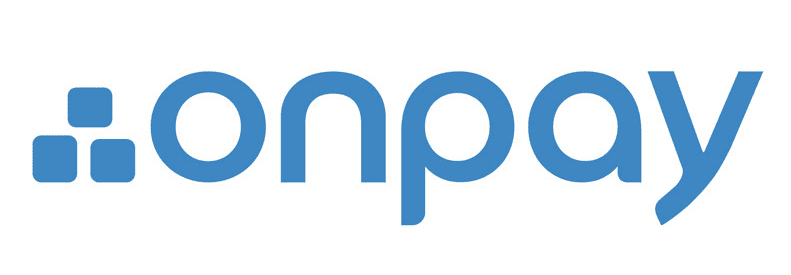
OnPay is a cloud-based full-service payroll processing system capable of running payroll according to a preset schedule, automatically disbursing wages, and calculating and withholding taxes.
OnPay can sync up with several other software your team is already using, making it easy to integrate the service into your team’s system. Another benefit of OnPays model is the simple, transparent pricing structure. No tiers; just one base rate.
Pricing:
$49/mo + $6/mo per employee
SurePayroll

SurePayroll’s award-winning service supports W-2 employees and 1099 contractors. Additionally, it handles 401(k) deductions and manages flexible spending accounts (FSA) and health savings accounts (HSA).
SurePayroll also offers a mobile app— available on both Apple and Android devices.
SurePayroll offers live support through its United States-based support team through chat, email, or phone.
Small Business Payroll
- Price: No Tax Filing: $20/month + $4 per employee, Full Service: $29/month + $7 per employee
- Best for: Small businesses and startups
Features:
- We file and deposit your federal and state taxes!
- Run payroll in 3 simple steps
- Schedule payroll to run automatically
- Unlimited payroll runs and free 2-day direct deposit
- Reports and pay stubs are available online 24/7
- Supports W-2 employees and 1099 contractors
Nanny & Household Payroll
- Price: Full-Service Household, $39/month, includes 1 employee, $10 per additional employee
Best for: Homeowners
Features:
- Signature-ready Schedule H
- We file & deposit your federal and state taxes!
- Run payroll in 3 simple steps
- Schedule payroll to run automatically
- Unlimited payroll runs and free 2-day direct deposit
- Reports & paystubs available online 24/7
- Supports W-2 employees & 1099 contractors
Be sure to choose a payroll service that works for your business, and provides you with the peace of mind that comes with a reliable bookkeeping system. Your employees will thank you.

Merck is currently in talks to acquire Seagen, a biotech company. The Wall Street Journal reports that the transaction is valued at $40 billion. And what happens if Merck acquires Seagen, and how would this acquisition benefit cancer research and treatment? Read more about the Merck Seagen buyout here.
Merck Seagen Buyout
Merck and Seagen are still deciding on their share prices. So far, talks have yet to reach an agreement on $200 per share. Both companies want to settle and finalize their deals before Merck announces its quarterly earnings on July 28. At the time of writing, Seagen’s stock was at $176.19.
With an estimated market value of $235 billion, Merck is looking to expand its presence in the cancer treatment space. The Merck Seagen Buyout could play a major role in that strategy. Since Seagen specializes in targeted cancer therapies, the acquisition would give Merck access to a broader range of oncology products.
Shareholder reactions to the new deal are overwhelmingly positive, and the stocks have been up since talks about the deal have been made public.
But this is not the first time that Merck and Seagen have made the news. Back in 2020, they collaborated because of cancer treatments. Seagen has a drug conjugate (ladiratuzumab vedotin) which would be used in conjunction with Merck’s Keytruda.
Merck reveals that Keytruda is its highest-selling product. It’s immunotherapy for cancer.
And this deal could help Merck offset the possibility of reduced sales because it will lose patent protection in 2028.
As promising as this deal is, there could be scrutiny from antitrust officials since there might be a litigation case from the Federal Trade Commission or Justice Department.
The Seagen buyout isn’t the only deal Merck has made recently. They’ve been busy closing another deal, but with Orion too.
Seagen
As a cancer biotech company, Seagen has therapies to ensure that patients benefit from the treatment and reduce any adverse side effects. Their treatments involve the therapy attacking tumors with toxins.
Merck partnering with Seagen isn’t a bad idea considering that Seagen made $1.4 billion in sales in 2021, most of it coming from Adcetris and Padcev (a treatment for urothelial cancers).
Merck-Orion Deal
In the middle of the Merck Seagen Buyout, Merck has recently partnered with Orion for the ODM-208 and other drugs. These drugs are related to the production of steroids. Orion found how it can combat hormone-dependent cancers and further developed this inhibitor.
Their deal includes that they should develop ODM-208 and promote it to the public together. And Orion will receive a $290 million payment from Merck.
Although they’re co-developing and marketing the new inhibitor, Orion will oversee the manufacturing side.
Co-developing the ODM-208 can help Merck with its current research and treatments for prostate cancer. President and CEO of Orion, Timo Lappalainen, says that this partnership will benefit Merck’s goals of treating cancer worldwide.
Other Ventures: Merck’s Role in the Pandemic
You may have heard about COVID-19 pills, which are a form of treatment for those diagnosed with mild to moderate COVID-19. Merck introduced an antiviral COVID-19 pill to the public. The name: Molnupiravir.
The COVID-19 pill is not a replacement for a vaccination. Instead, it stops the replication of the COVID-19 genetic code and keeps the patient out of the hospital. Not yet FDA-approved, Molnupiravir has been authorized for emergency use since December 23, 2021.
And for other stories, read more here at Owner’s Mag!

Should I Buy an Electric Scooter? What You Can Learn

Best Workflow Mapping Tools for Smarter Business Processes

Top White Label Marketing Tools for Agencies: Our 10 Best Picks

Virtual Reality Exhibit Carne Y Arena: The Refugees’ Plight

Top 10 Podcast Editing Software Applications for Beginners

What Is Tiktok Pink Sauce? The Viral Condiment, Explained

Did You Drop Your Smartphone in The Ocean? Here’s How to Retrieve It

Top White Label Marketing Tools for Agencies: Our 10 Best Picks

History of the NBA: The Success Behind the Big League

Demio SaaS 2025 Review: Features, Pricing, Pros & Cons

Did You Drop Your Smartphone in The Ocean? Here’s How to Retrieve It

Virtual Reality Exhibit Carne Y Arena: The Refugees’ Plight

Best Workflow Mapping Tools for Smarter Business Processes

Gift Guide: 25 Best Gifts for Women for All Occasions
Trending
- Technology18 hours ago
Top White Label Marketing Tools for Agencies: Our 10 Best Picks
- Technology23 hours ago
Virtual Reality Exhibit Carne Y Arena: The Refugees’ Plight
- Technology16 hours ago
Best Workflow Mapping Tools for Smarter Business Processes
- Technology23 hours ago
Top 10 Podcast Editing Software Applications for Beginners
- Lifestyle6 hours ago
Should I Buy an Electric Scooter? What You Can Learn






Tayda Delacruz
June 26, 2023 at 12:03 pm
Have friends my TikTok is so nice too me love all everyone
More followers and more views love my TikTok sent love and be kindness